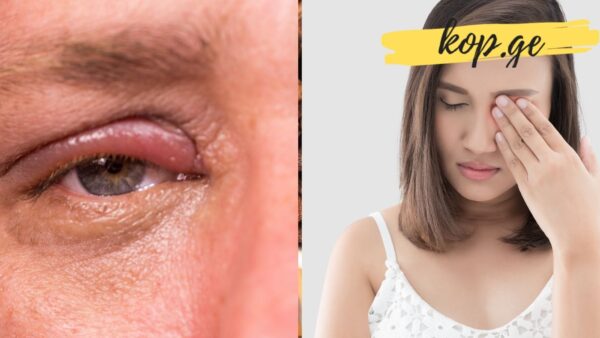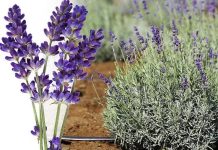The Most Useful and Effective Tips Against a jiblibo: What You Need to Know

A jiblibo, medically known as hordeolum, is an acute, pus-filled inflammation of a hair follicle or the sebaceous (oil) gland located at the base of an eyelash. It typically appears as a small red bump on the edge or inside of the eyelid and is often accompanied by symptoms like itching, redness, tenderness, and pain. In most cases, styes are caused by bacteria, particularly Staphylococcus aureus, although other bacterial agents may be involved as well.
Styes are a relatively common eye problem and are especially frequent in young children. This is largely due to their sensitive eyes and a natural tendency to frequently touch or rub their eyes with unwashed hands. Since children often come into contact with bacteria during play and day-to-day activities, this behavior creates a perfect environment for infections like styes to occur. However, styes are not limited to children—adults can also suffer from them, and their symptoms may vary depending on the cause and severity of the infection.
Below are the most practical, effective, and easy-to-follow tips to both treat and prevent styes, while also improving your overall eye hygiene and health.
1. Clean the Affected Area Gently
If you already have a stye, the first step is to keep the area clean to prevent the infection from spreading or worsening.
Wash your hands thoroughly with soap and water.
Take a clean cotton swab or pad, moisten it with warm (not hot) water.
Gently clean the affected eyelid with soft, circular motions. Be careful not to apply too much pressure.
Always use a new cotton swab for each cleaning session to avoid contamination.
This method helps to remove crusts and bacteria from the eyelid and can speed up healing.
2. Maintain Proper Hygiene
Good hygiene is the best and most effective way to prevent styes.
Avoid touching or rubbing your eyes, especially with unwashed hands.
Use a separate towel for your face and eyes—do not share towels with others.
Never share cosmetic products, especially eye makeup such as mascara, eyeliner, or eye shadow.
Make a habit of regularly cleaning your makeup brushes and replacing expired makeup products.
Maintaining these habits reduces the chance of transferring bacteria to your eyes.
3. Warm Compresses Work Wonders
Applying a warm compress is one of the most soothing and healing treatments for a stye.
Take a clean cloth, soak it in warm (not hot) water, and wring it out.
Place it gently on the affected eye for 5–10 minutes.
Repeat this process 3–4 times a day.
This helps open up the blocked glands and promotes natural drainage of pus. In some cases, using warm chamomile tea bags as compresses can also be very helpful. The anti-inflammatory properties of chamomile can reduce swelling and accelerate the healing process. If pus starts to drain from the stye during or after a warm compress, gently wipe it away using a clean cloth or tissue.
Important: Never attempt to squeeze or pop the stye yourself, as this can lead to further complications or spread the infection deeper into the eyelid.
4. Pain Management
Styes can be painful, especially when blinking. If the pain is significant, you can take over-the-counter nonsteroidal anti-inflammatory drugs (NSAIDs) such as ibuprofen or acetaminophen (paracetamol), which help reduce both pain and inflammation. Always follow the dosage instructions on the medication and consult a doctor if you’re unsure.
5. When to See a Doctor
Although most styes resolve on their own within a week, you should consult a healthcare professional if you experience any of the following:
Severe or increasing pain
Swelling that spreads beyond the eyelid
Redness or discharge that worsens
Vision problems
The stye does not improve after several days of home treatment
Recurring styes
These could indicate a more serious infection or another eye condition that requires medical attention.
6. Use Antibacterial Creams with Caution
In some cases, a doctor might recommend or prescribe an antibiotic ointment or cream. If so:
Apply the cream directly to the affected area (never inside the eye).
Follow the instructions precisely.
Avoid using over-the-counter antibiotic creams without medical guidance.
7. Natural Remedies and Home Treatments
Several natural remedies may help relieve discomfort and support healing. However, always make sure your hands and all tools or ingredients are clean before applying anything near your eyes.
Coriander Seeds
Coriander is known for its anti-inflammatory properties.
Soak a tablespoon of coriander seeds in water for 1 hour.
Strain the liquid and use it to wash the affected eye 2–3 times a day.
This remedy can help reduce swelling and redness.
Aloe Vera
Aloe vera is widely praised for its soothing, anti-inflammatory, and antibacterial qualities.
Cut a fresh aloe vera leaf and extract the gel.
Apply a small amount directly to the stye with clean fingers or a cotton swab.
Alternatively, soak a cotton pad in aloe juice and gently place it on the eyelid.
Do this twice a day for best results.
Raw Potato
Potatoes are naturally anti-inflammatory and can help draw out infection.
Grate a raw potato and wrap it in a clean cloth.
Apply the compress to the affected eyelid for about 10–15 minutes.
This can help soothe irritation and reduce swelling.
Final Thoughts
While a stye may be irritating and uncomfortable, in most cases it is a minor condition that can be effectively treated at home. Proper hygiene, early intervention, and consistent care are key to both treating and preventing future infections. Natural remedies can provide relief, but if symptoms persist or worsen, professional medical advice is essential.
Wishing you a swift recovery and good health!












